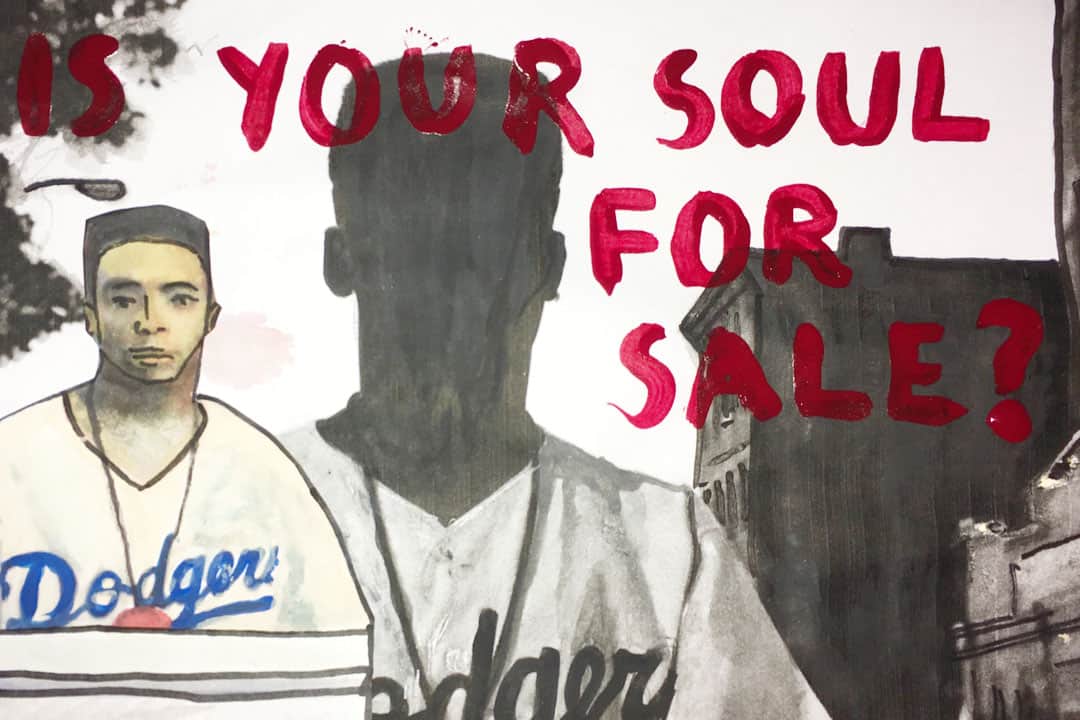In 1604, Mephistopheles, a devil acting as Lucifer’s messenger, tricked the educated and well-meaning Doctor Faustus into selling his soul in exchange for endless power and — little did he know — eternal damnation. While Christopher Marlowe’s classic morality tale was about the tragedy of turning one’s back on God, Spike Lee’s Bamboozled addresses the morality of turning one’s back on oneself.
When asked why he chose to showcase this film at the Toronto Black Film Festival this year, Lee said that it encapsulated the fundamental question embedded within all of his works: “is your soul for sale?” Following a pause, he added, “and if so, at what price are you willing to sell it?”
Bamboozled is Spike Lee’s turn-of-the-millennium satire about a Black television executive, Pierre Delacroix (Damon Wayans) who creates a reincarnation of the wildly racist minstrel shows — which were nineteenth century theatre shows built on the comic enactment of Black racial stereotypes — in order to get himself fired. This was done with the aim of exposing his network for its bigotry. His plan failed miserably as the show turned out to be a massive hit, drawing in ardent fans who unironically relished in the degrading stereotypes of the minstrel show.
Delacroix hires a homeless tap dancer, Manray, and his friend, Womack, to be the central characters in his show. The two men agree to take up the roles, which would require them to don blackface, seeing it as an opportunity to make money and survive. Lee specifically referred to them as the “casualties of capitalism” stating that these are the people who “wear the burden of the past” on their face. The types of people who, in poverty, are left with no choice but to sell out.
Delacroix eventually caves into the show’s newfound popularity, celebrating his success and defending the satirical nature of the show. As the story progresses, the characters are haunted by what they have done, and in the process of defending their decisions, they all spiral into their own crises of identity.
Characteristically of Lee, the film ends with an explosion of violence, which exposes the hazy juncture at which the abandoned stereotypes of the minstrel show meet institutionalized racism.
Lee dedicated a large amount of screentime to the process of putting on makeup in the dressing room. Before every show, the camera focuses on the ritualization of the the application of blackface. Lee painstakingly documents every aspect of it: lighting the cork, watching it melt into a thick black paste, the spoon mixing it in, the sponge dipped into the paste and smeared onto a face looking in the mirror. This scene repeats itself before every performance, and each time the actors are burdened more than the last. The hand applying the makeup is less steady, and the face that bears the mask is worn out. One scene sees Womack applying blackface, covering up his tears.
The strangeness of the film lies in the fact that Lee made a satire about a failed satire. In fact, the film begins by defining satire as “a literary work holding up human vices and follies to ridicule or scorn.” Bamboozled clarifies that satire can only be called such if it is successful. That is, its ridicule and criticism must be understood by the audience. While Delacroix ceaselessly defends his show as satirical, its irony is lost, not just on the viewing public, but on the television executives and writers producing it. The success of his blatantly racist show lies in unearthing the American consumer’s craving for the very caricatures that were thought to have been shut out and left in the past.
At the heart of it, Lee examines the complicated relationship between race and popular culture in our capitalist society. The difficulty faced by creatives like Delacroix is that, unable to produce the stories they want, they are forced to ‘give the audience what they want’ by making compromises in order to be commercially viable. It is a problem strongly mirrored in Lee’s decades-long career. His unwillingness to back down from controversial material or alter his abrasive and confrontational style has led to him not only being underappreciated and misunderstood, but also unable to gather funds for his films despite his successes.
Delacroix sold out the moment he struck his Faustian bargain by succumbing to the pressure of executives, making a compromise. Most crucially, he sells out by lying to himself: maintaining that the show is merely satirical and not a further degradation of his race, sold as entertainment. Thus, he fell victim to an industry bent toward corrupting truths and ideals.
This is exactly what Lee himself has relentlessly tried to avoid. In 1990, the year Driving Miss Daisy, widely regarded as having pandered to white America, won the Academy Award for Best Picture, Spike Lee’s groundbreaking film Do the Right Thing was largely snubbed.
At the end of his interview at the festival, while explaining the importance of his work and why he does what he does despite being, at times, overlooked, he wanted to draw attention to the words of James Baldwin, quoted at the end of the film: “People pay for what they do, and still more for what they have allowed themselves to become. And they pay for it very simply; by the lives they lead.”


